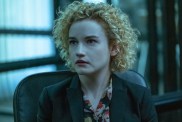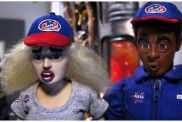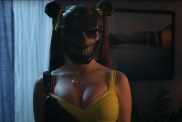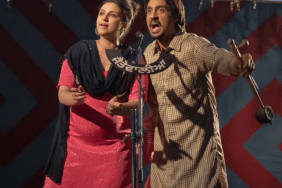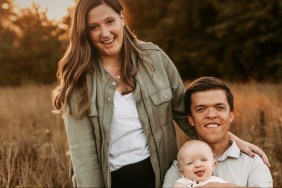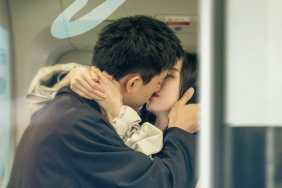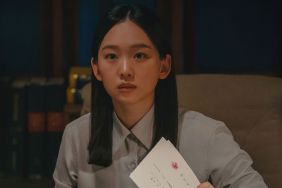
The Fountain has been talked about all over the place. There are stories of it being booed, adored, hissed and even the source of a rumored press brawl (that had to be embarassing). It is a film that is obviously hitting an emotional nerve, love it or hate it there apparently seems to be something that has people buzzing. Enter our director, Mr. Darren Aronofsky, the man that brought you Pi and Requiem for a Dream. The man that is now father to Fountain star Rachel Weisz’s child. Yeah, he is one lucky pop, but he is also a director that doesn’t mind taking some risks, he leaves his films open for interpretation, and even if Requiem for a Dream made you sick to your stomach there is no denying it has appeal. The Fountain is no different, it is a film that will create conversation and will open your mind to ideas you may have never thought of.
I had some time with Mr. Aronofsky to talk about what was behind The Fountain, I hope you will enjoy our conversation as much as I did.
Darren Aronofsky: It’s so nice to be back in Seattle. It’s such a great film loving audience here.

DA: What really interested us when we were creating the script was myth and what excites us about myth is that you look at all these different cultures around the world, from the Mayans, to Judeo Christian, Islamic tradition, Buddhist tradition and at the core are these myths that are very similar, yet as a people we have become so far apart, but the fact that there is something spiritual that unites and connects us underneath all this other nonsense was a very holy idea to me. I think that’s the core that I tried to hold on to, trying to retell an ancient myth as a science fiction psychedelic fairy tale.
DA: Well, it always is what it is. My twenties taught me that you have to be open to all of the negative shit and all the positive shit that comes along equally, and I tried to be as even keeled as I could when the film didn’t get made the first time. It’s impossible to say what that movie would have been, we were seven weeks out from shooting it. Me and my fellow filmmakers were confident we were ready and that it was going to be an exciting shoot and that we knew what we were doing, but being forced to go back to the drawing board and spending more time to figure out how to get the film made turned it into something different. Ultimately it came alive in the same way that the first version would have come alive.
DA: I think no matter how much you as a director preconceive something and to be honest those preconceptions of the first version and this version, they were all similar in my head, but it changes as soon as you get actors. If I was a painter those are your colors, and 95% of the movie is looking at the actors faces. The Fountain is Hugh Jackman’s and Rachel Weisz’s film, it’s their emotions, their aspirations, their tragedies, it’s their love. With other actors it would have been a different poem so I think you have to just be open to what those actors are giving you and work with it.

DA: That was the great challenge. We knew we wanted to tell a story of immortality and to tell the story of immortality we felt it would be a shame to tell it in one time period. So we very quickly opened it up and we got the ideas of juxtaposing deep future and deep past and tying it all together in a knot in the present day and how you do that is a hard process to explain, but me and my co-creator, Ari Handel, spent a lot of time walking around Manhattan and talking ideas and researching those ideas. Slowly but surely we came up with this Chinese box/Russian doll construction of a story within a story within a story and we got very excited about that. I don’t think it is that radical to fans of science fiction and graphic novels, they will get where we are coming from. I think it’s new and a different type of experience for moviegoers because we often get things very force-fed and very down the line and straightforward, so when you do something out of the ordinary it’s always going to create ripples and some people are going to want to ride and some people are going to want to dive under.
DA: Thank you. You know that’s why I am here. I am just trying to do new stuff and try to work with people that are trying to push the edge of things. Not to say no one’s ever done it before, but trying to do it in our own way.

NOTE: Spoilers are blacked out and removed. Highlight to read.
DA: Different people find the climax at different places and I’ve heard people have a reaction to the part that you were talking about (removed to not ruin the movie) and a lot of people find the conquistador dying an emotional beat and when the guy in the bubble says he is going to die to the queen, people found that… For me there are multiple peaks because there are a lot of different stories to tie up and that one that you are talking about is the present day one and it is a big one for a lot of people because I think people get really deep into that love story and can connect with the sadness of that, but I do think that other people find the release of the Tommy character, when he does accept it for himself a big spot.
I don’t see the movie as a tragedy, I see it as… I don’t know… I think it is how the sadness of our lives makes life richer. There is humanity in our mortality… That’s what I was going for.
DA: I love a good short trip. I grew up in Coney Island and there was this great roller coaster called The Cyclone and I rode it an uncountable amount of times and that minute and 33 seconds that it runs was just always a very full experience, so I don’t think the length of time really matters, I think it is about the emotional experience. I think a lot of movies are unfortunately long and undisciplined. I think there are great movies, like The Lord of the Rings, maybe more than two hours, maybe more than three, I’m fine with it because they breath on that level, but you are getting so many films now that need a good cut. I’ve always been a ruthless editor and if I wasn’t directing I would probably be an editor, I think it’s my best process, but I’m pretty harsh. If something doesn’t work – cut.
DA: Not much. Unfortunately we had a tight budget, the film was made for $35 million. Everything, all in, everything. That’s an incredibly little amount of money and everything that is on the screen was everything that was planned to be shot. You know a line of dialogue here and there, a few things got trimmed, but if you look at the shooting script it’s pretty close, if not exactly to the film.
DA: I always joke about not doing Rush Hour 3. Look, I like those movies, I am the first person to go and see the new blockbuster, I watch everything, but I think I end up complicating things so I don’t know what I’ll do. The next thing we are working on is a really, really big movie, which I think is a blockbuster. We’ll see what happens with it.
DA: They are all projects we have been developing but what I am doing next has not been announced.
DA: I think it’s a mythical epic film. It’s a huge idea and because of the size of our idea we won’t be able to escape commercial ability.

DA: The first one I cut, the second one the studio cut. [laughing] But I think it’s a challenge but I think that at the core of The Fountain is this question about immortality and what does it mean to live forever and I think that is a very commercial idea. In fact our oldest myth, Gilgamesh all the way through the Bible, Genesis all the way up through Ponce De León and of course “Nip/Tuck” on TV today. People are interested in the Fountain of Youth and I think that’s what we are selling, a story about the search for the Fountain of Youth.
The Fountain hits theaters on November 22, for more on the film including a gallery of 64 images and nine clips from the film click here.

